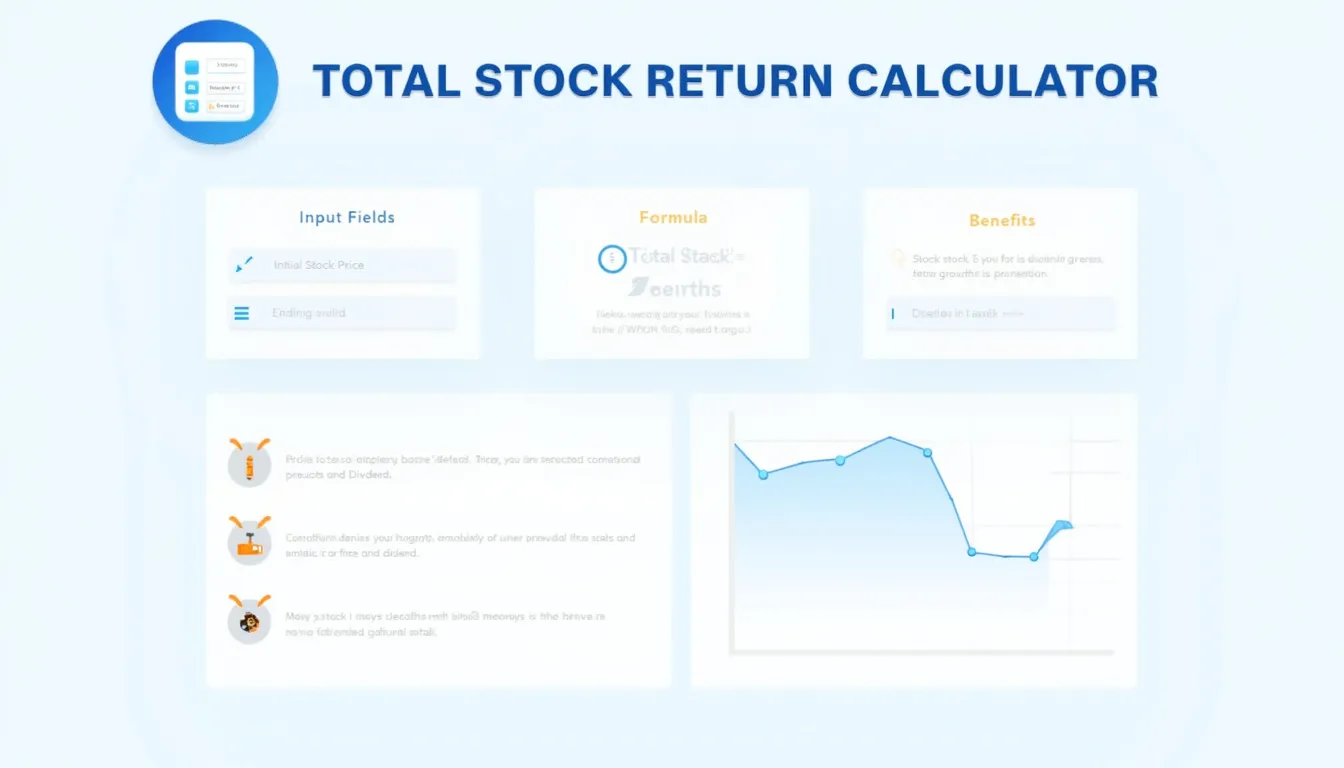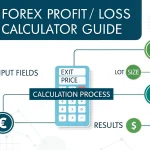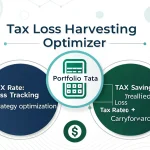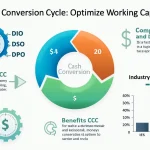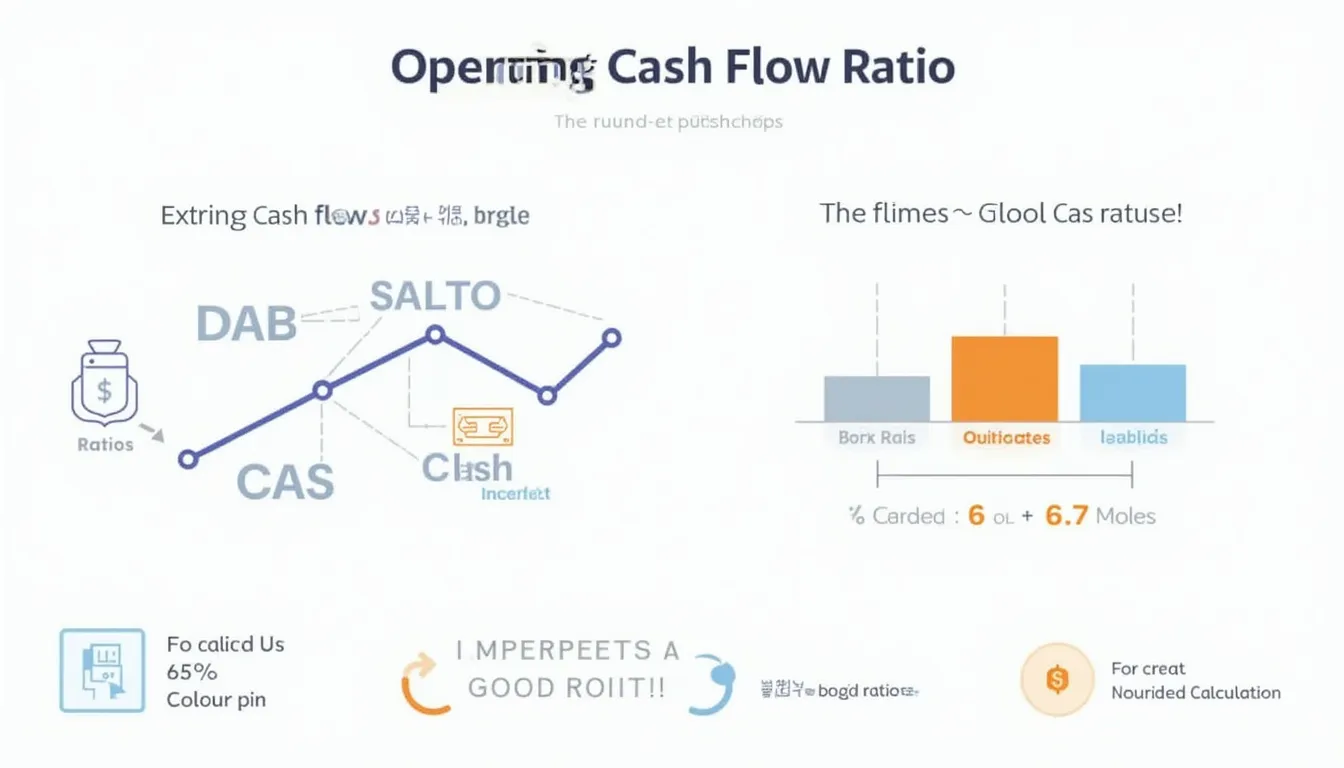Total Stock Return Calculator
Is this tool helpful?
How to use the tool
- 1. Initial price ($): Type what you paid per share, e.g., $25.40 or $112.75.
- 2. Ending price ($): Enter the current / sale price, such as $37.10 or $95.20.
- 3. Dividends ($): Add all cash dividends received—examples: $1.20 or $6.85.
- 4. Press “Calculate”: The tool returns one percentage showing overall profit or loss.
Formula applied
$$ rac{(\text{Ending Price} – \text{Initial Price}) + \text{Dividends}}{\text{Initial Price}} \times 100\%$$
Example A
Initial $25.40, Ending $37.10, Dividends $1.20:
$$ rac{(37.10-25.40)+1.20}{25.40}= rac{12.90}{25.40}=0.5079 \times 100\%=50.79\%$$
Example B
Initial $90.00, Ending $80.00, Dividends $5.00:
$$ rac{(80.00-90.00)+5.00}{90.00}= rac{-5.00}{90.00}=-5.56\%$$
Quick-Facts
- Total return combines price movement and income, unlike price-only metrics (Investopedia, 2023).
- Average S&P 500 dividend yield ≈ 1.6 % in 2022 (FactSet, 2023).
- Historical U.S. stock split frequency: about 10 per year since 2010 (NASDAQ Market Data, 2022).
- Tool accepts values ≥ 0; negative dividends not allowed (IRS Publication 550, 2023).
- Results do not auto-adjust for splits—edit initial price accordingly (SEC Investor Bulletin, 2022).
FAQ
What does the calculator measure?
Total return shows the percentage gain or loss once you add dividends to price movement (Investopedia, 2023).
How do I annualize a multi-year total return?
Convert the result to a growth factor, raise it to rac{1}{years}, then subtract 1 (Morningstar Classroom, 2023).
Why include dividends?
Dividends supplied 32 % of the S&P 500’s total return between 1926-2022 (Hartford Funds, 2023).
Can I use this for ETFs or mutual funds?
Yes—replace share prices with fund NAVs and distributions with dividends (SEC Fund Basics, 2022).
Does the tool adjust for stock splits?
No. Update the initial price to post-split terms before calculating (SEC Investor Bulletin, 2022).
How frequently should I check total return?
Quarterly reviews align with standard portfolio monitoring cycles (CFA Institute, 2020).
Is total return the same as CAGR?
CAGR divides the growth evenly per year; total return gives the full period’s gain (Morningstar Classroom, 2023).
What do experts say about total return?
“Total return is the most comprehensive measure of investment performance” (CFA Institute, 2020).
Important Disclaimer
The calculations, results, and content provided by our tools are not guaranteed to be accurate, complete, or reliable. Users are responsible for verifying and interpreting the results. Our content and tools may contain errors, biases, or inconsistencies. Do not enter personal data, sensitive information, or personally identifiable information in our web forms or tools. Such data entry violates our terms of service and may result in unauthorized disclosure to third parties. We reserve the right to save inputs and outputs from our tools for the purposes of error debugging, bias identification, and performance improvement. External companies providing AI models used in our tools may also save and process data in accordance with their own policies. By using our tools, you consent to this data collection and processing. We reserve the right to limit the usage of our tools based on current usability factors.
